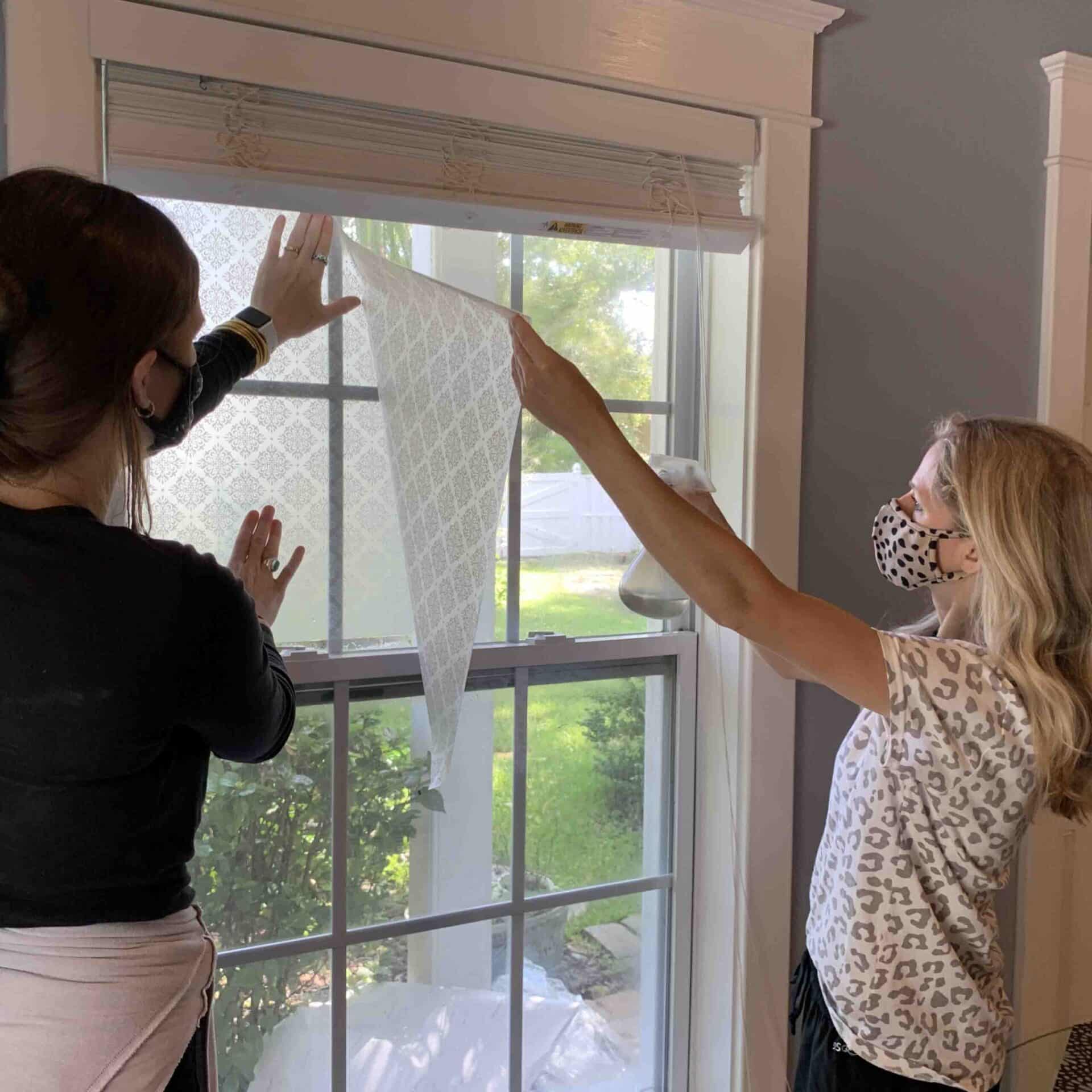Maintaining Window Films: Tips for Longevity from Top Chinese Suppliers
Window films, such as self-healing thermoplastic polyurethane (TPU) paint protection films (PPF) and anti-scratch nano-ceramic films, have become essential for protecting automotive and architectural surfaces while enhancing aesthetics and energy efficiency. With advancements in materials and manufacturing, Chinese suppliers like Guangzhou Qihang Window Film Technology Co., Ltd. are leading the global market, offering high-quality films with features like self-healing, hydrophobic properties, and UV resistance. To maximize the lifespan and performance of these films, proper maintenance is critical. This article provides expert maintenance advice, supplier-recommended cleaning techniques, and replacement schedules, drawing insights from top Chinese manufacturers to ensure longevity for films like TPU PPF and nano-ceramic coatings.
Understanding Window Films and Their Benefits
Window films serve multiple purposes: protecting car paint from scratches and chips, reducing heat and UV exposure in vehicles and buildings, and enhancing privacy. TPU PPF, often called “clear bra,” is a durable, transparent polyurethane film with self-healing properties that repair minor scratches when exposed to heat. Nano-ceramic films, made from microscopic ceramic particles, offer superior heat rejection (up to 99% infrared), UV protection, and scratch resistance while maintaining optical clarity. These films, supplied by companies like Guangzhou Qihang, are designed to last 5–10 years or more with proper care, making maintenance a key factor in their value proposition.

China’s window film industry, centered in cities like Guangzhou, is renowned for its innovation and quality. Suppliers like Guangzhou Qihang produce a range of films, including TPU PPF (e.g., TPU-TK150, TPU-AK150) and nano-ceramic window tints (e.g., IR15, Q15), with warranties of up to 10 years. However, environmental factors like UV exposure, road debris, and improper cleaning can degrade films prematurely. Following manufacturer-recommended maintenance practices ensures these films retain their protective and aesthetic qualities over time.
Read more: Small Front Yard Landscaping on a Budget: Creative Ideas for a Big Impact
Maintenance Tips for Longevity
1. Regular Cleaning with Gentle Techniques
Cleaning is the cornerstone of window film maintenance, but harsh methods can damage films. Guangzhou Qihang recommends washing TPU PPF and nano-ceramic films weekly to remove dirt, dust, and contaminants like bird droppings or tree sap, which can stain if left untreated.
-
Cleaning Solution: Use a pH-neutral car shampoo or a dedicated PPF cleaner, such as those recommended by Leidu Material Technology (Guangzhou). Avoid abrasive cleaners, ammonia-based products (common in glass cleaners), or solvents, as they can degrade the film’s topcoat or adhesive. A solution of mild dish soap (1 tsp per gallon of water) is a safe alternative.
-
Tools: Use a soft microfiber cloth or sponge to avoid scratching. For nano-ceramic films, a non-abrasive pad can remove stubborn stains. Rinse thoroughly with clean water to prevent soap residue.
-
Technique: Wash in a shaded area to prevent water spots from drying under sunlight. For TPU PPF, Guangzhou Yuwei New Material Co., Ltd. suggests using a two-bucket method (one for soapy water, one for rinsing) to minimize grit transfer. Dry with a clean microfiber towel or a blower to avoid streaks.
2. Leveraging Self-Healing Properties
TPU PPF’s self-healing feature, as offered by Guangzhou Qihang’s TPU-V15 or Nanolink’s premium films, repairs minor scratches and swirl marks when exposed to heat. To activate this:
-
Heat Application: Park the vehicle in direct sunlight (ideal temperature: 70–90°F) for 10–20 minutes, or use a heat gun (set to low, 6–12 inches away) to gently warm the scratched area. For deeper scratches, pour warm water (120–140°F) over the film.

-
Limitations: Self-healing works best for light scratches in the topcoat. Deeper damage may require professional repair or replacement. Regular heat exposure (e.g., during car washes) enhances the film’s ability to maintain a smooth appearance.
3. Protecting Hydrophobic and Anti-Scratch Features
Nano-ceramic films and TPU PPF often feature hydrophobic coatings, causing water to bead and roll off, carrying contaminants away. To preserve this property:
-
Avoid Waxing: Traditional carnauba waxes can clog the hydrophobic layer, reducing its effectiveness. Instead, use ceramic-specific maintenance sprays or SiO2 boosters, as suggested by Ceramic Pro.
-
Topcoat Maintenance: Guangzhou Qihang’s nano-ceramic films (e.g., NC-01) benefit from periodic application of hydrophobic sealants every 6–12 months to restore water-repelling properties.
-
Anti-Scratch Care: Avoid automatic car washes with stiff brushes, which can scratch even anti-scratch films. Hand washing or touchless car washes are safer, per Leidu Material Technology’s guidelines.
Read more: How to Choose the Best Swimming Pool Equipment Suppliers: A Complete Guide
4. UV Protection and Environmental Care
UV radiation can cause yellowing or adhesive breakdown in low-quality films, but high-quality TPU PPF and nano-ceramic films from suppliers like Nanolink are UV-resistant for 2–10 years. To extend this:
-
Parking: Store vehicles in a garage or shaded area when possible to minimize UV exposure. For architectural films, interior curtains can reduce UV impact.
-
Contaminant Removal: Promptly remove acidic contaminants like bug splatter or acid rain, which can etch the film. Guangzhou Goodcarway Window Film Co., Ltd. advises using a clay bar with lubricant for stubborn residues, followed by a gentle wash.
Supplier-Recommended Cleaning Techniques
Top Chinese suppliers emphasize specific cleaning protocols to maintain film integrity:
-
Guangzhou Qihang: For TPU PPF (e.g., TPU-183), use a pressure washer (under 1,500 PSI) at a 45-degree angle, at least 12 inches away, to avoid lifting edges. For nano-ceramic films (e.g., Q15), clean with a microfiber cloth dampened with water, avoiding alcohol-based cleaners that can degrade adhesives.
-
Leidu Material Technology: Recommends monthly maintenance washes for TPU PPF, using a foam cannon to apply soap evenly, reducing abrasion. For nano-ceramic films, avoid high-pressure sprays near edges to prevent delamination.
-
Guangzhou Yuwei New Material: Suggests applying heat (e.g., via a car wash) after cleaning TPU PPF to enhance self-healing and remove minor stains. For nano-ceramic films, use a quick-detailer spray to boost gloss and hydrophobicity post-wash.
Replacement Schedules
The lifespan of window films depends on quality, environmental exposure, and maintenance. Chinese suppliers provide clear replacement guidelines:
-
TPU PPF: Guangzhou Qihang’s TPU PPF (e.g., TPU-AK150, 7.5 mil) lasts 5–10 years with proper care, backed by warranties of 5–8 years. Signs of replacement include persistent yellowing, edge lifting, or loss of self-healing ability. Nanolink’s premium PPF, with nano-ceramic topcoats, can last up to 10 years if maintained with regular cleaning and sealant applications.

-
Nano-Ceramic Films: Films like Guangzhou Qihang’s IR15 or Leidu’s high-IR rejection tints last 5–7 years in automotive applications and up to 10 years in architectural settings. Replace if fading, bubbling, or reduced heat rejection is noticed, indicating adhesive or coating degradation.
-
Inspection: Suppliers recommend annual professional inspections to check for edge wear, adhesive failure, or coating damage. Replacement is advised if damage compromises protection or aesthetics.
Challenges and Solutions
Maintaining window films can present challenges, particularly for seniors or those in harsh climates:
-
Hard Water Spots: In areas with mineral-rich water, spots can form on films. Use a 1:1 vinegar-water solution to dissolve them, followed by a rinse and dry, as advised by Guangzhou Yuxin Film Technology Co., Ltd.
-
Edge Lifting: Improper installation or high-pressure washing can cause edges to lift. Guangzhou Qihang suggests professional re-sealing for minor lifting or replacement for extensive damage.
-
Harsh Weather: Extreme heat or cold can stress films. Park in shaded areas and use protective sealants to mitigate weather-related wear.
Future Trends in Window Film Maintenance
Chinese suppliers are innovating to simplify maintenance. Guangzhou Qihang is developing films with enhanced anti-stain coatings, reducing cleaning frequency. Nanolink’s research into instant-healing PPF, similar to Ceramic Pro’s Kavaca, aims to eliminate the need for heat-based repairs. Additionally, eco-friendly cleaning solutions and recyclable films are gaining traction, aligning with global sustainability trends.
Conclusion
Maintaining window films like self-healing TPU PPF and anti-scratch nano-ceramic films is essential for maximizing their 5–10-year lifespan and protective benefits. By following supplier-recommended practices—gentle cleaning with pH-neutral solutions, leveraging self-healing properties, protecting hydrophobic coatings, and adhering to replacement schedules—users can ensure their films remain effective and visually appealing. Top Chinese suppliers like Guangzhou Qihang, Leidu, and Nanolink provide high-quality films and practical guidance, making maintenance straightforward. With proper care, these advanced films from China’s leading manufacturers offer long-term protection, energy efficiency, and aesthetic enhancement for vehicles and buildings alike.
DEALS DELIVERED TO YOUR INBOX.
Subscribe now for top-notch shopping & Investing advice. Receive hot Vouchers into your wallet
By submitting your information you agree to the Terms & Conditions and Privacy Policy
Related Articles
.png)
Frozen Desserts Trend: Top 10 Ideas for a Refreshing Indulgence

Sydney Opera House at Night: Stunning Views & Photography Inspiration

Winter Coats Women Shearling: Top 10 Ideas for a Chic and Cozy Winter Style

Top 12 Chic Slip Dress Ideas That Effortlessly Elevate Your Style

Review: Top Hotel Booking Sites with Discounts

Berry Bliss: Top 10 Strawberry Smoothie Recipes You’ll Fall in Love With
Popular Brands
View all
Joycuff
5 Coupons Available

Reflio
5 Coupons Available

Vestinda
5 Coupons Available

ChatRealtor
2 Coupons Available

Niram
5 Coupons Available

Gomoonbeam
5 Coupons Available
Popular Articles
View all
18 Pokémon Gym Badge Tattoo Ideas That Evolve Your Ink to the Next Level

Glow Like Glass: The Ultimate Bridal Makeup for Radiant, Poreless Skin
.png)
Welcome to the Elegant World of Layer Cake Chocolat: A Delicious Overview

Love Hurts: Barbed Wire Heart Tattoo Ideas That Wrap Passion in Pain & Power

🍈 Top 12 Lime-Scented Perfumes That Smell Fresh, Zesty & Bold

Ultimate Guide to Black Friday Clothing Sales 2024: Best Deals & Tips
LATEST
.jpg)
Last updated: Apr 29, 2025

Last updated: Jun 19, 2025

Last updated: Jun 9, 2025

Last updated: Aug 28, 2025

Last updated: May 28, 2025

Last updated: May 28, 2025
